NeverRift is a spatially aware TCG with its own kind of magic
NeverRift is a Kickstarter that will launch on 28th May and offers the excitement of a collectible TCG alongside a number of unique gameplay elements that should enable it to feel as though it occupies a unique space in the market.
We’ve received an early access copy of NeverRift, one featuring a playmat and a couple of decks of cards, and whilst these products aren’t completely final, I dare say they are pretty representative of the finished product and the intended experience.
In NeverRift, each player controls a Tamer — which means exactly what it sounds like. The objective of the game is to control the most creatures when the board fills up, with whoever has most of their tokens showing on those creatures being the winner. A creature arrives on the board when it is played from hand, and any creature played this way will begin with a token belonging to the player who cast it.
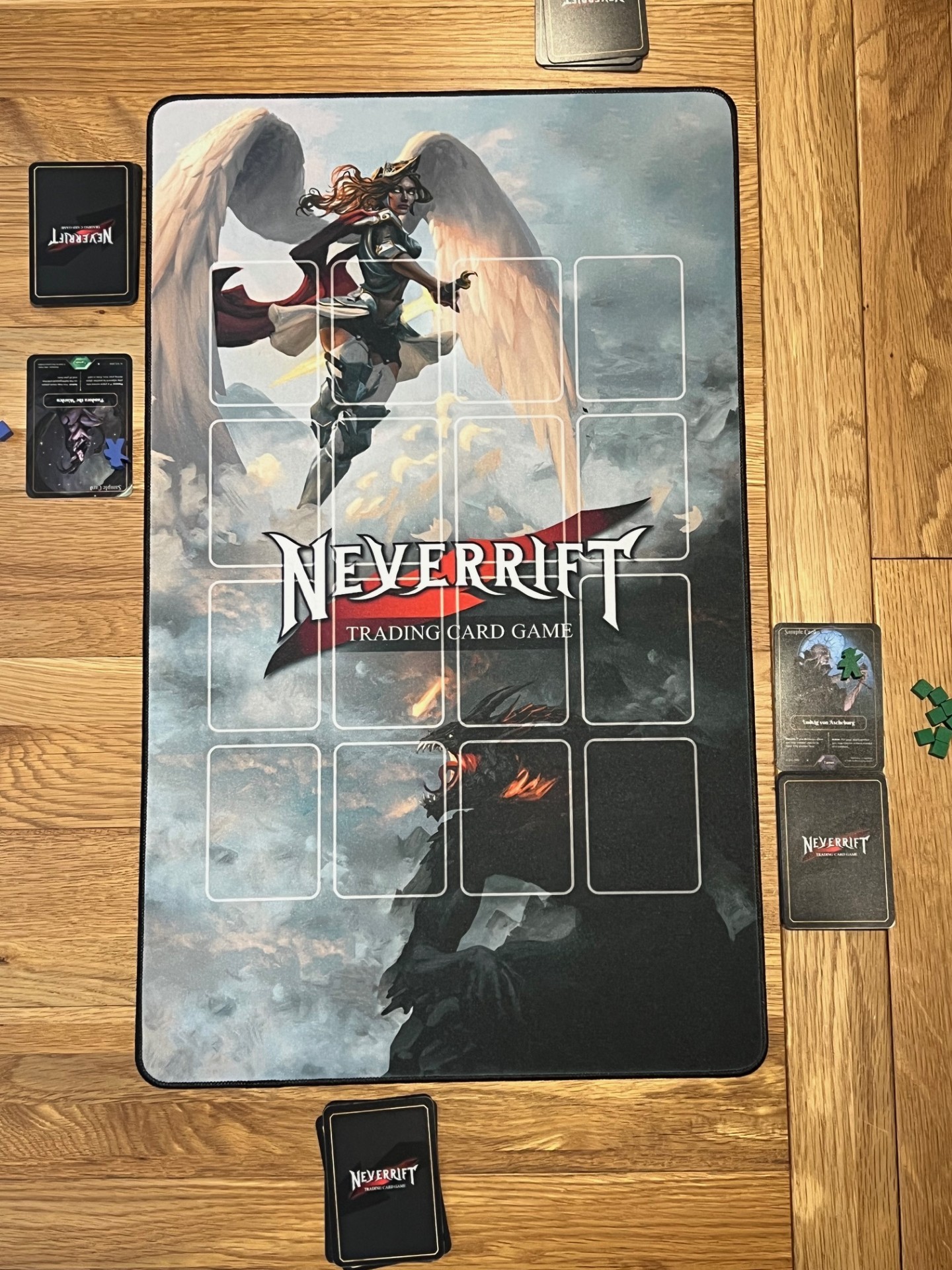
The nuance of NeverRift in comparison to any other TCG is the fact that when a creature is played like this, it will attack in all four directions around it — and any creatures that it defeats (because their combat value is lower) will change allegiance to that of the creature that attacked them. I’m stating the obvious here, but this makes the spatial puzzle in NeverRift at least as critical (if not more than) the traditional aspects of this genre such as deck building, timing and clever use of game breaking rules text.
That said, there are cards other than creatures in NeverRift, and players will also make clever use of both places and spells. Places take up a slot on the board just like creatures do, but unless a rule is introduced to say otherwise, they’ll never “belong” to either player. What they do instead, is allow a player to modify the cards around it — perhaps by moving a creature elsewhere on the board, or by modifying the combat values of all adjacent creatures.
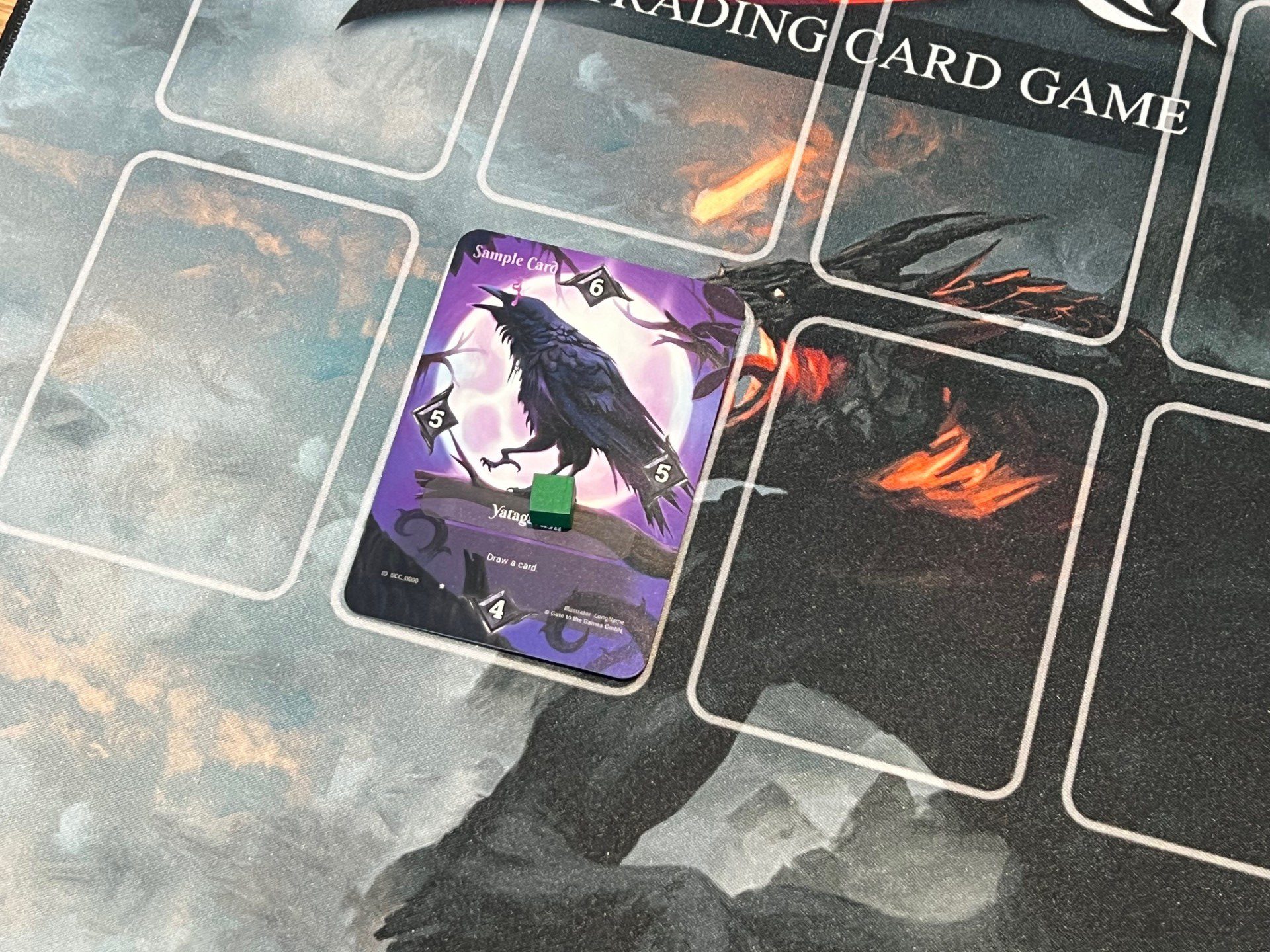
One thing that I noticed about NeverRift is that there are a number of cards that are strictly more powerful than others, but due to the fact that there is no “summoning cost” or resource payable (such as mana in games like Magic: The Gathering) I did wonder how power creep will be managed. In games like Magic, a card can be considered strong if it is either highly effective but high cost, or simply effective relative to its mana cost (for example a 3/3 creature that enters for two mana would be almost game-breaking).
In NeverRift, the limiting factor for powerful cards like this is partly in the deckbuilding, but also when or where (on the board) you play them, rather than how much they cost to deploy (which is always free). For example, the Thornspire Tyrant card has power levels between A (unbeatable) and 6 (pretty high) in all four directions, and it confers the ability to draw a card when played. It’s raw combat power is enough to beat the majority of cards, and if you can land a card like this right in the middle of the board to flip control of at least two or even three creatures, then that’s crazy. The fact it replaces itself with another card is even crazier!
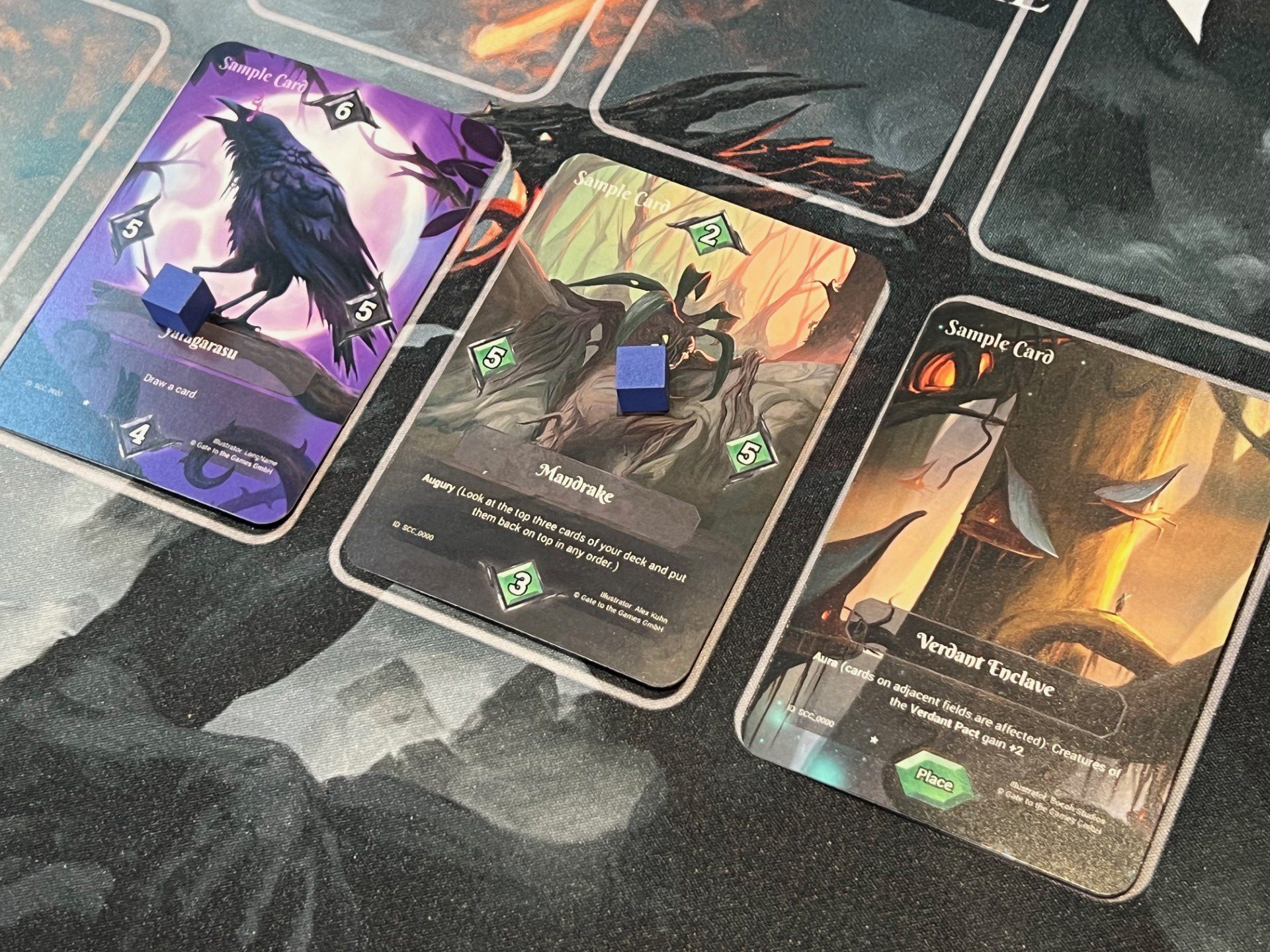
Because Thornspire Tyrant is a legendary card (denoted by three stars on the bottom left corner) you can only ever have one per deck. What’s more, each deck must have a minimum of thirty cards with a maximum of twenty stars across all of them. This means that cards costing zero stars (common), rare (costing one), and epic (costing two) must also be used. Players are allowed two of the same card in their deck for all rarities except legendary, but for those ultra powerful cards like our Thornspire Tyrant, only one copy is allowed.
I don’t have enough NeverRift cards to do my own deck building yet, and I haven’t seen enough cards overall to understand whether all things are equal within the rarity brackets that the designer has created, but in principle, I like this system. A limit of 20 stars per deck, with a clear way to exclude overpowered strategies based around a deck full of identical legendary cards makes sense, and it works well alongside the idea that all cards can be deployed for free.
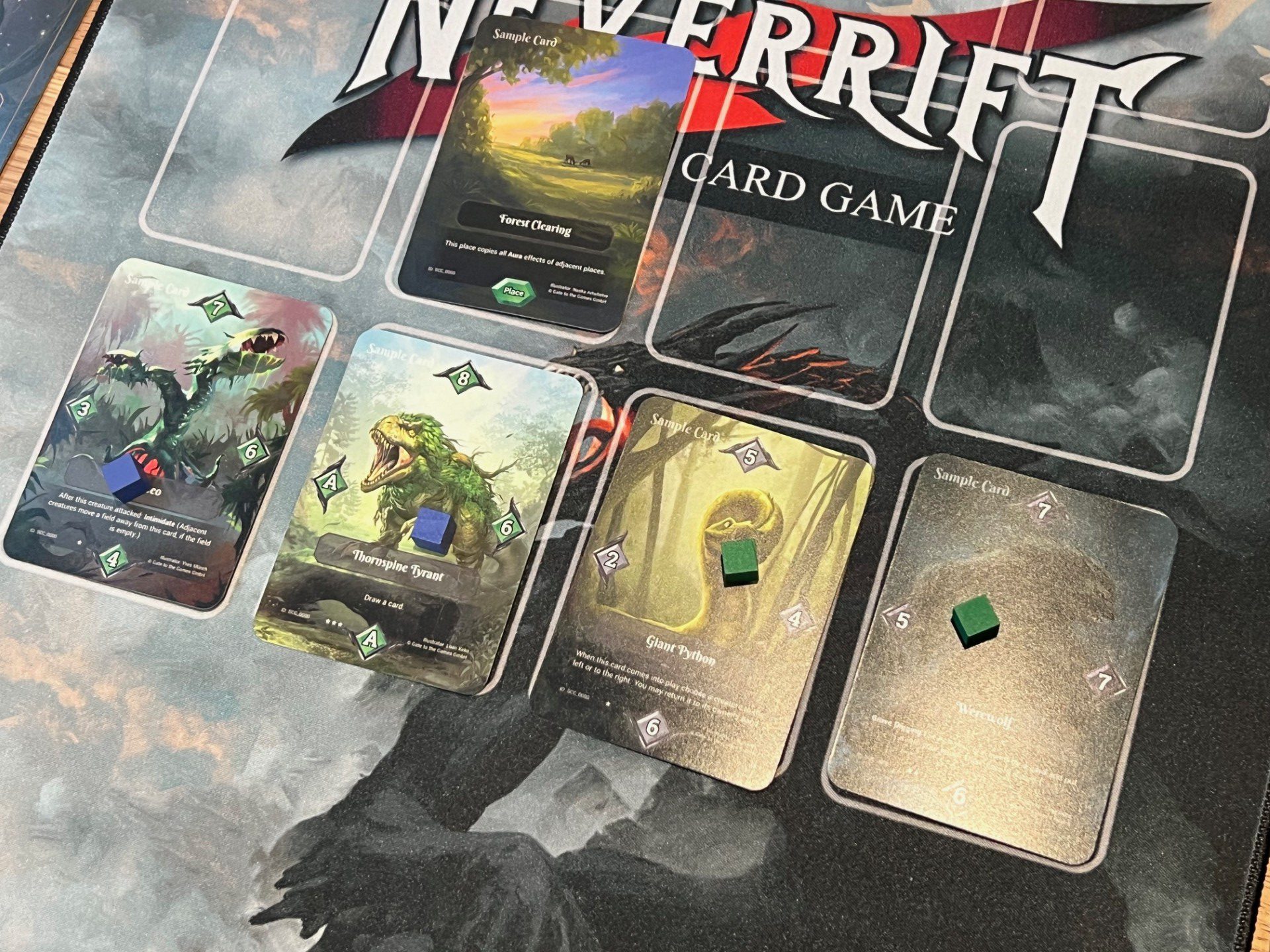
Going back to my earlier example, if you had a card like the Thornspire Tyrant in a game like Magic, then as soon as it hits the table, your opponent either has an immediate answer, or they will be beaten within a very short number of turns. In NeverRift, playing a card like Thornspire Tyrant can be absolutely game changing, but playing it in the wrong space or at the wrong time could render it a lot less powerful than it should be.
One interesting feature of NeverRift is that one each turn, a player may play either a creature or place card, or both. To continue this now long-running example even further, a place card like Secret Passage could be used to move a creature (controlled by either player) elsewhere on the board to make a gap for the dragon — which can then use its high power and Pierce effect to flip several cards. Again, I have a limited sample size for what is possible, but I can see the potential for this within NeverRift’s systems.
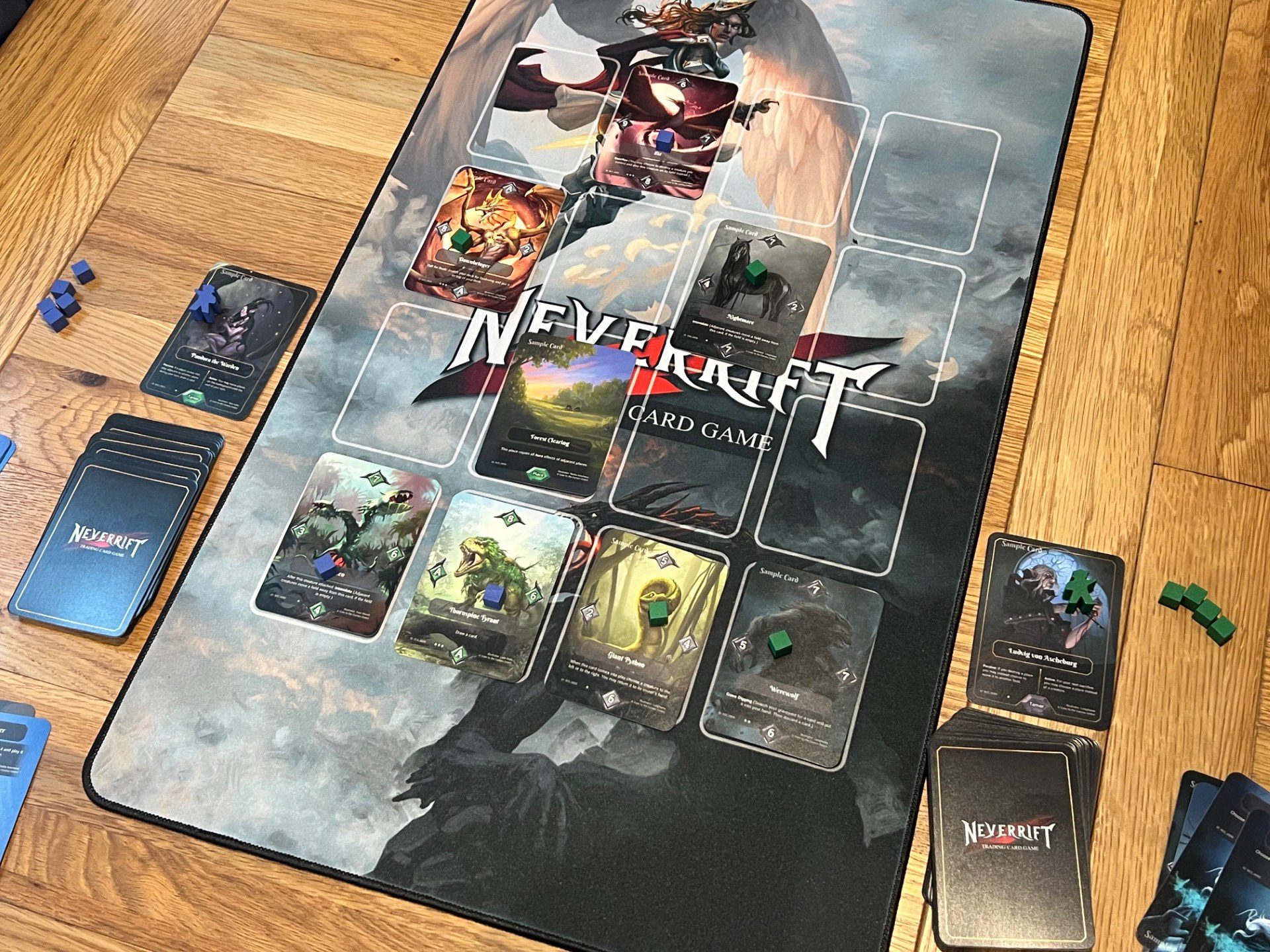
I would also like to comment on the artwork in NeverRift, which falls into the generic high-fantasy bracket, and yet is almost all please and full-card in size, with relatively little clutter in terms of text and iconography to block it. For a game this size being developed by a smaller studio, it should also be applauded that NeverRift features real artwork, with nothing generated by AI as far as we are aware.
If I have any criticism at this stage in the campaign, it’s probably just about language localisation — and I realise this is a very privileged position to come from. Some aspects of NeverRift, especially in the rules booklet, are not completely clear — with most of the issue looking like a translation issue to me. There are a couple of genuine rules inconsistencies as well, for example with the Tamer cards having both a passive and an active ability printed on them that can only be used once per turn or once per game respectively.
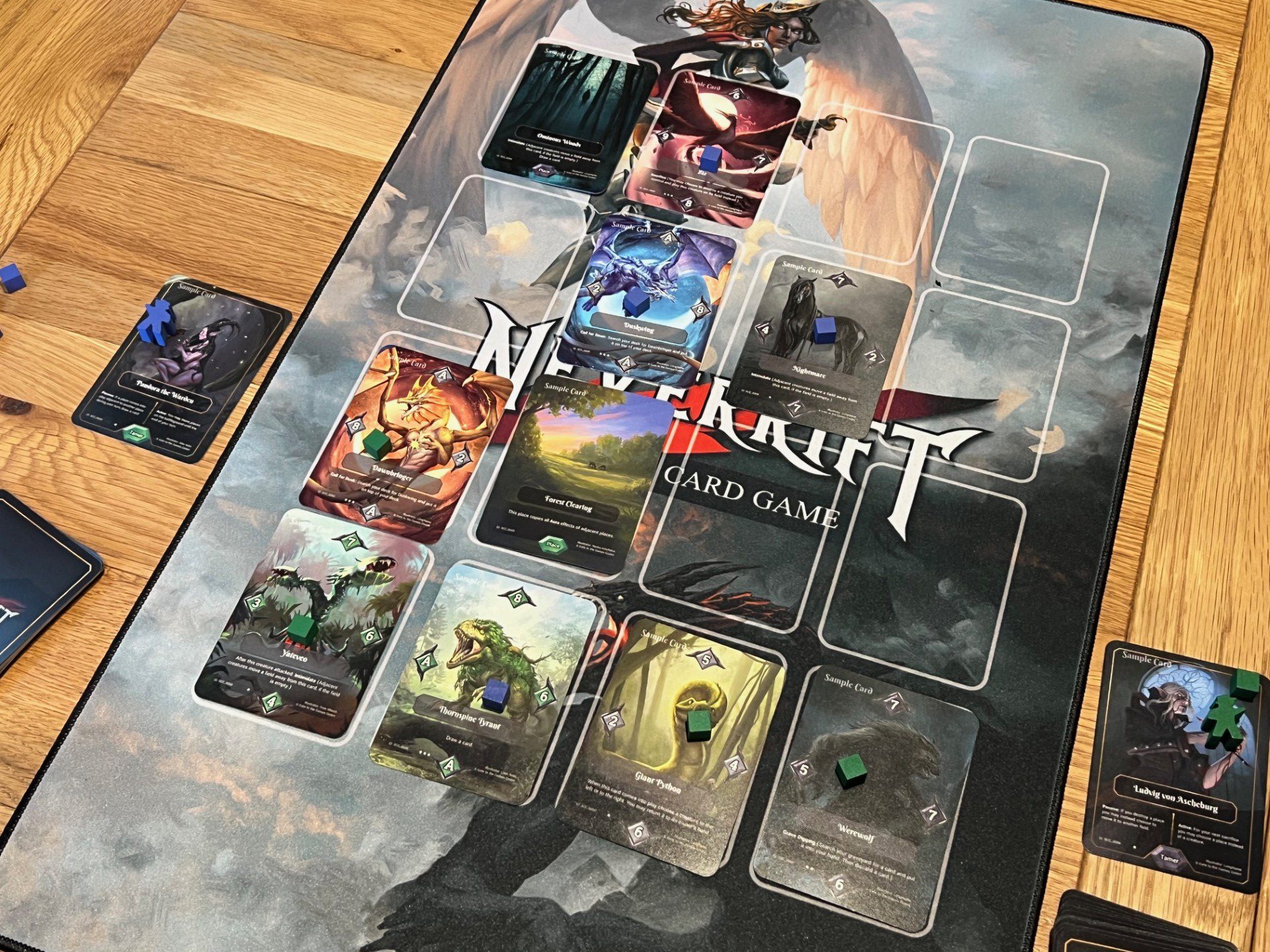
This key clarification is in the rules, but not on the cards, and I would hazard to say that in most other games, “passive ability” terminology means something that is always present, not something to use actively once per round. I am kind of splitting hairs here though — and as I said right at the top, this is still an early copy of the game and not the finished product. It is not uncommon for this kind of thing to be ironed out during a campaign as the result of feedback from backers (and potentially reviews such as this one).
Overall, NeverRift has shown me enough promise to kindle a feeling of excitement about what we might see after the campaign. I am already thinking about deckbuilding possibilities, how to create unbeatable combos and lots more. I’d also like to see a lot more lore to pad out the high fantasy theme, and based on some of the material that I’ve already seen, the designer does seem to have that in their back pocket.
Head over to Kickstarter to find the NeverRift campaign when it goes live soon.
Comments are closed.